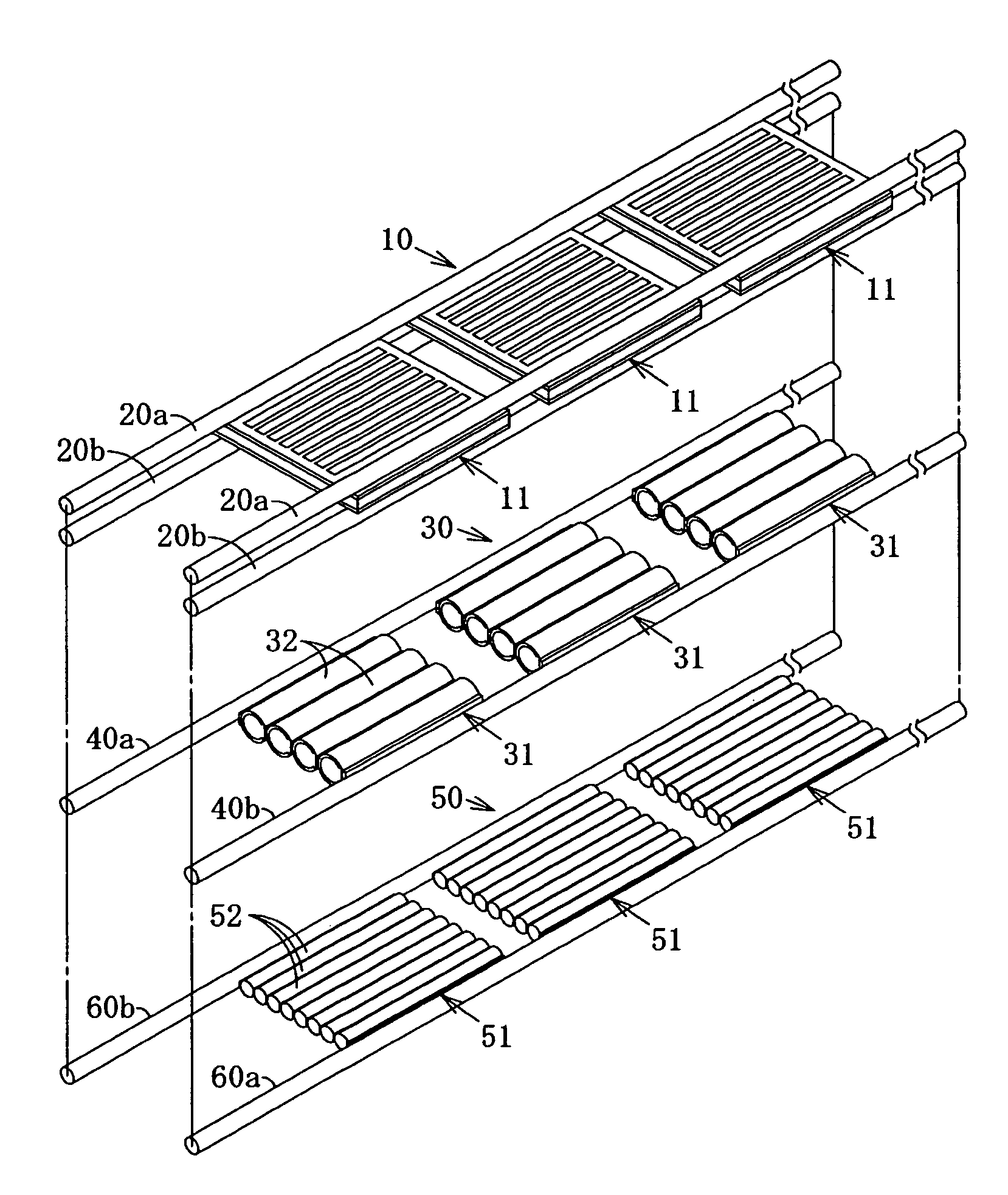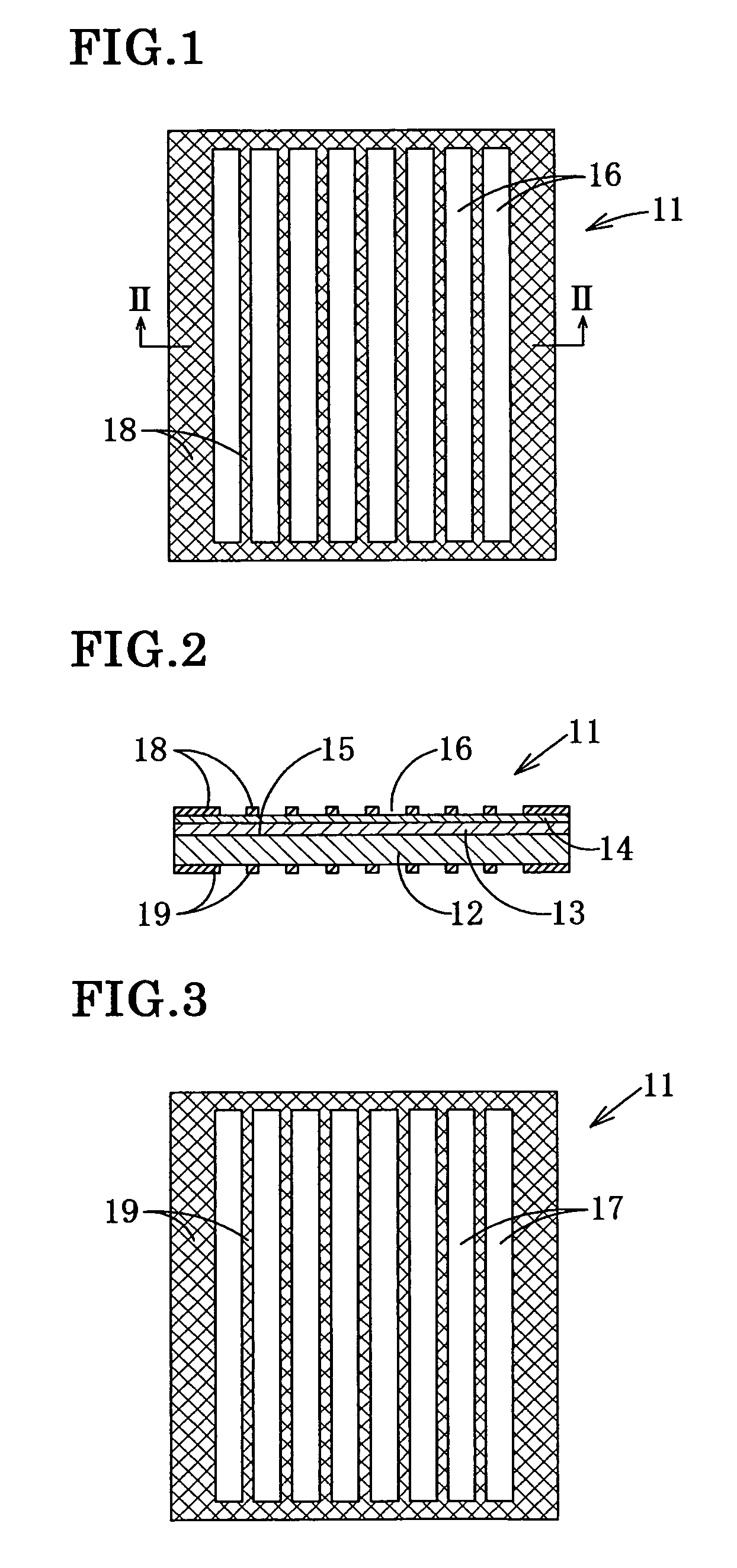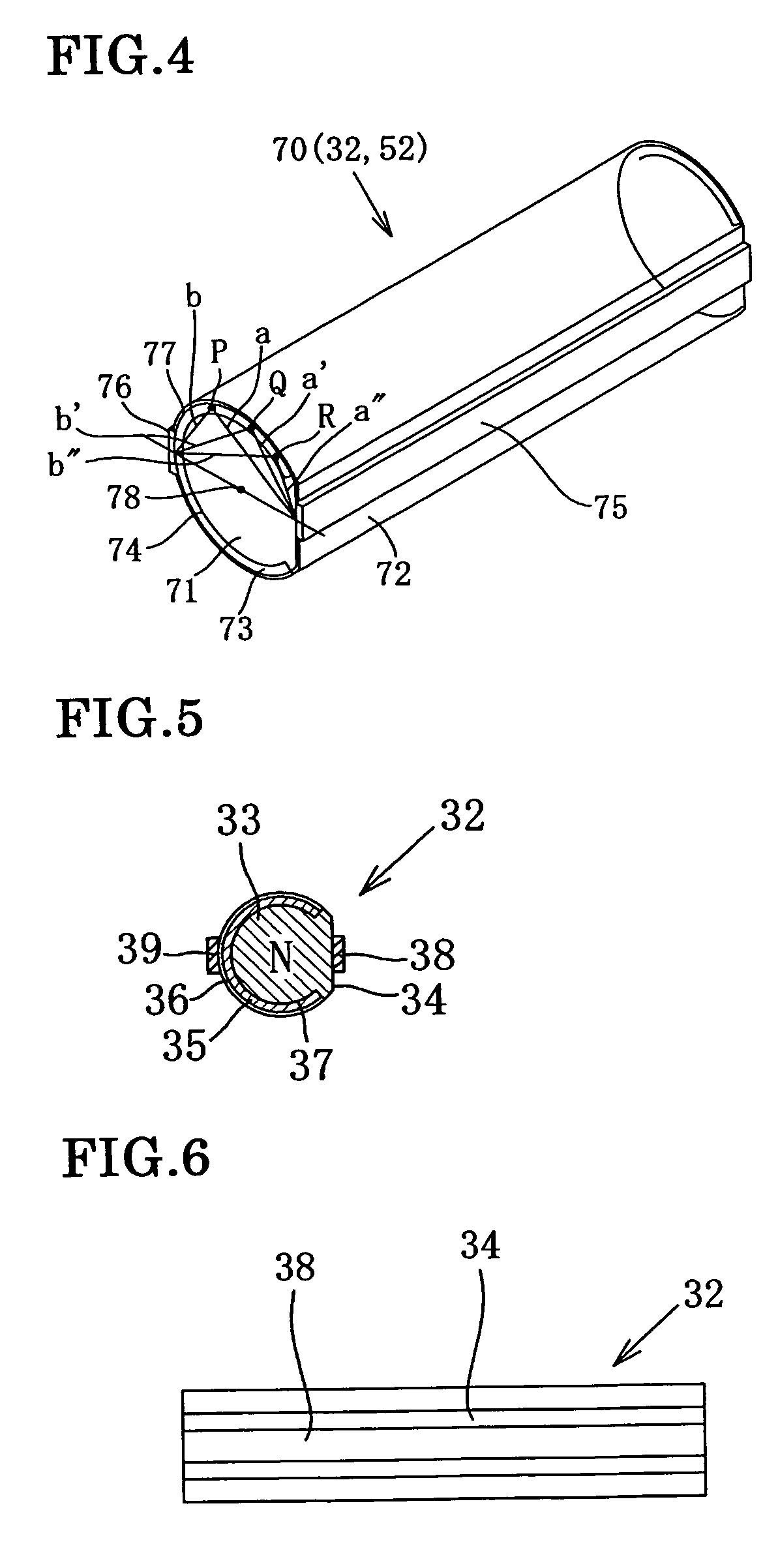Stacked solar cell device
a solar cell and battery technology, applied in the direction of semiconductor devices, photovoltaics, electrical devices, etc., can solve the problems of increased manufacturing costs, increased work costs, and inability to effectively convert photoelectrically with respect to reflected and scattered lights coming from plural directions around
- Summary
- Abstract
- Description
- Claims
- Application Information
AI Technical Summary
Benefits of technology
Problems solved by technology
Method used
Image
Examples
embodiment
[0109]Hereinafter, an embodiment of the present invention will be described with reference to the drawings.
[0110]As shown in FIGS. 11 to 15, a light collecting type stacked solar battery device 1 comprises an enclosure case 2 made of a metal plate, stacked solar battery units 4 respectively housed in three recesses 3 of the enclosure case 2, a sealing material 63 (not shown in FIG. 13) filled in each of the recesses 3, a cover glass 5 arranged on an incident side of sunlight, end stopping blocks 6 arranged at both ends of each of the recesses 3 of the enclosure case 2.
[0111]The stacked solar battery unit 4 comprises three kinds of solar battery modules 10, 30 and 50 which are different from one another in the sensitivity wavelength band, and the shorter center wavelength of the sensitivity wavelength band the solar battery module has, the closer to the incident side of the sunlight of the solar battery module is positioned. The first solar battery module 10 has five planar light rec...
PUM
 Login to View More
Login to View More Abstract
Description
Claims
Application Information
 Login to View More
Login to View More - R&D
- Intellectual Property
- Life Sciences
- Materials
- Tech Scout
- Unparalleled Data Quality
- Higher Quality Content
- 60% Fewer Hallucinations
Browse by: Latest US Patents, China's latest patents, Technical Efficacy Thesaurus, Application Domain, Technology Topic, Popular Technical Reports.
© 2025 PatSnap. All rights reserved.Legal|Privacy policy|Modern Slavery Act Transparency Statement|Sitemap|About US| Contact US: help@patsnap.com



